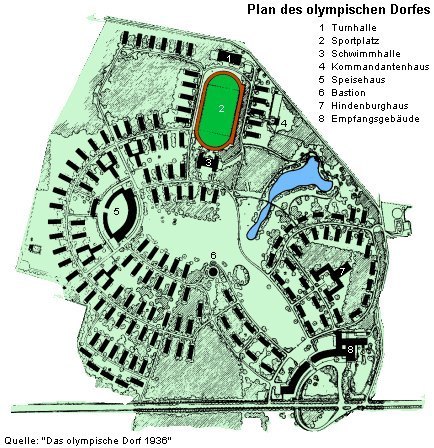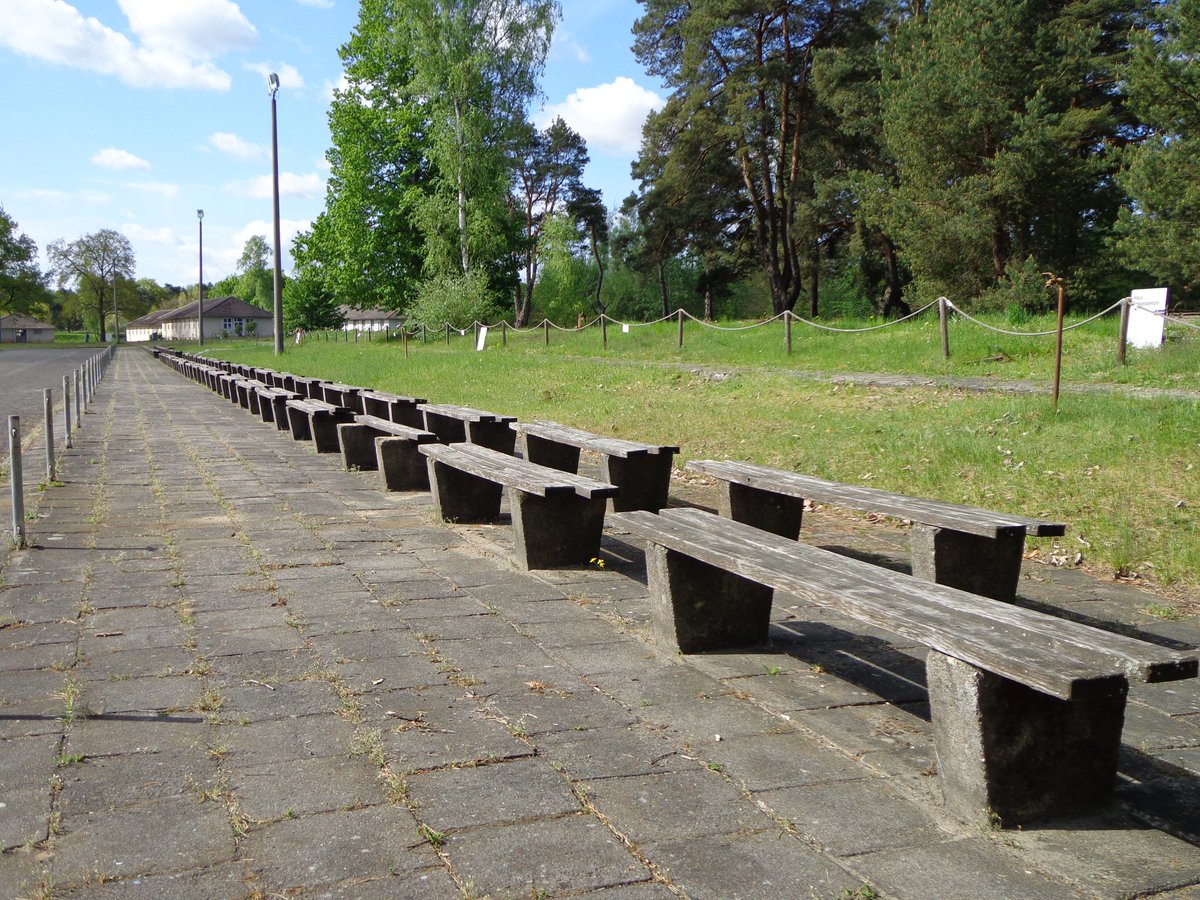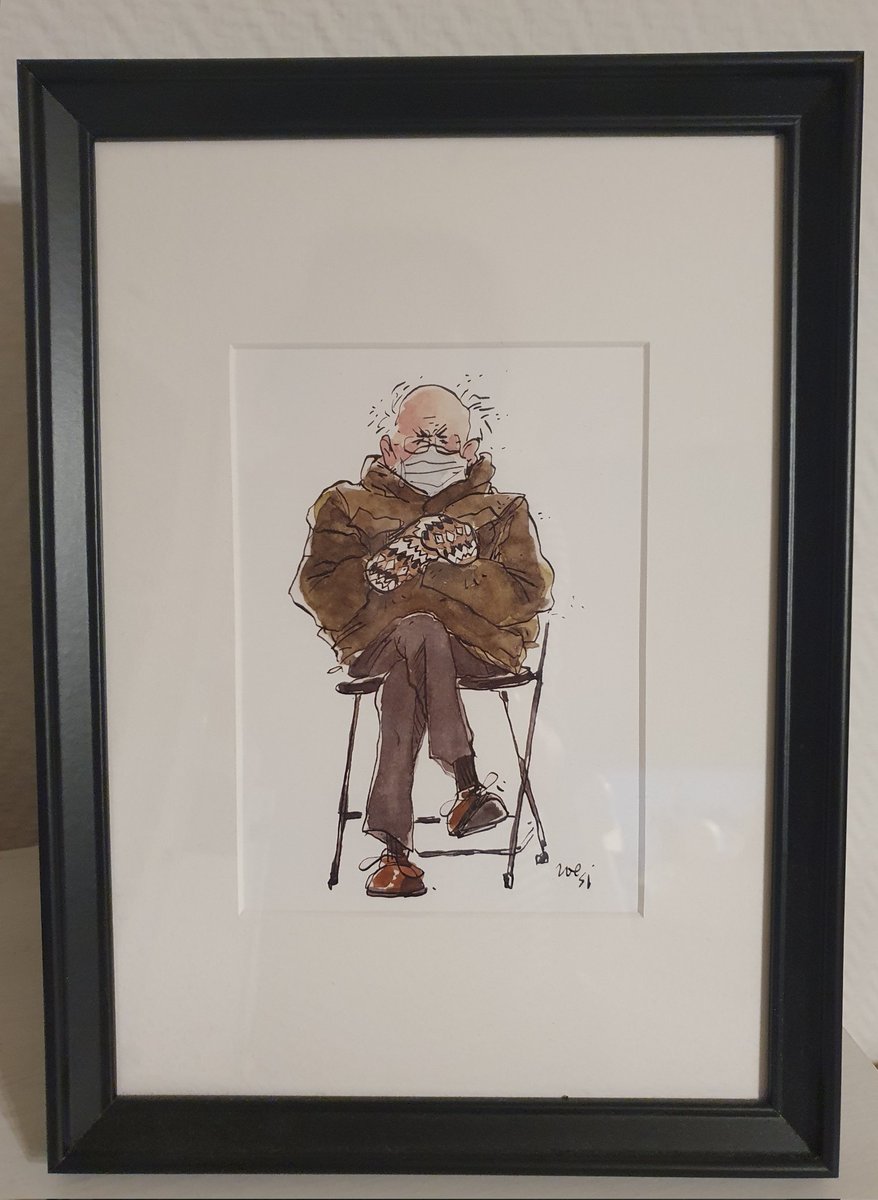
In 2015, the last excusion before leaving Berlin took us to the Olympic Village of the 1936 Games - a fortunate choice! A yr later, it was sold to an investor specialised on developing historic sites. In 2019, construction began to create a new residential quarter.
A 🧵 walk ...
A 🧵 walk ...

2/
The Olympic Village 1936 is located 18km west of Berlin. It housed 3,600 male athletes of 40 nations in 136 houses (161 buildings in total) and came with track & training fields, a gym & swimming pool, dining halls, surgeries & a hospital, a Finnish sauna, & a forest lake.

The Olympic Village 1936 is located 18km west of Berlin. It housed 3,600 male athletes of 40 nations in 136 houses (161 buildings in total) and came with track & training fields, a gym & swimming pool, dining halls, surgeries & a hospital, a Finnish sauna, & a forest lake.


3/
Designed by Werner March, who also drew up the plans for the Olympic Stadium, it was built in less than 2 years, with 161 buildings, 6.5km of roads, on an area of 500,000m² (about 70 football pitches).

Designed by Werner March, who also drew up the plans for the Olympic Stadium, it was built in less than 2 years, with 161 buildings, 6.5km of roads, on an area of 500,000m² (about 70 football pitches).


4/
During World War II it was used by the German military, from 1945 until 1992 by the Soviet Army, and then left to decay until in 2005 DKB foundation stepped in & developed & managed it as a historic site.
Let's have a look and a wander ... with pictures from 1936 and 2015.

During World War II it was used by the German military, from 1945 until 1992 by the Soviet Army, and then left to decay until in 2005 DKB foundation stepped in & developed & managed it as a historic site.
Let's have a look and a wander ... with pictures from 1936 and 2015.


5/
Enter the Village via the track field, in the background the swimming pool. Along the side, the first of 136 bungalow-style team quarters. Of a few, only the foundations remain, others were much decayed, one was restored to recreate Jesse Owens quarters.



Enter the Village via the track field, in the background the swimming pool. Along the side, the first of 136 bungalow-style team quarters. Of a few, only the foundations remain, others were much decayed, one was restored to recreate Jesse Owens quarters.




6/
Every team building, named after German towns & cities, provided double-rooms for the athletes, central heating, showers, toilets, a coin-operated telephone and a common room, always located at the south side of the building, with large glass doors leading out to a terrace.



Every team building, named after German towns & cities, provided double-rooms for the athletes, central heating, showers, toilets, a coin-operated telephone and a common room, always located at the south side of the building, with large glass doors leading out to a terrace.




7/
On to the swimming hall, with fully retractable, electric glass windows (a sensation at the time), shower, changing & massage rooms and outside a bath to clean your feet before entering.
(As the building was unsafe, the pictures were taken through the windows.)



On to the swimming hall, with fully retractable, electric glass windows (a sensation at the time), shower, changing & massage rooms and outside a bath to clean your feet before entering.
(As the building was unsafe, the pictures were taken through the windows.)




8/
The largest and most prominent building, the "Speisesaal der Nationen" (dining hall for all nations) provided a room for each team with the kitchens located around the inner court. The top floor offered a view of the Olympic Stadium.



The largest and most prominent building, the "Speisesaal der Nationen" (dining hall for all nations) provided a room for each team with the kitchens located around the inner court. The top floor offered a view of the Olympic Stadium.




9/
It was designed with war use in mind [1936 !], and indeed served as a military hospital during WWII (hence the balconies, so patients could be wheeled out to get some fresh air).

It was designed with war use in mind [1936 !], and indeed served as a military hospital during WWII (hence the balconies, so patients could be wheeled out to get some fresh air).


10/
Below, the menu.
Footnote: Only few of the Olympic teams were allowed alcohol: the Italians and French were permitted wine, the Belgians and Dutch beer, of course. 😉

Below, the menu.
Footnote: Only few of the Olympic teams were allowed alcohol: the Italians and French were permitted wine, the Belgians and Dutch beer, of course. 😉


11/
Moving over 1,000 trees during construction, a forest, Finnish sauna and forest lake were created. After an English newspaper commented that all that was missing in such an idyllic spot were storks, the organisers had some captured and brought over from Berlin Zoo.
Moving over 1,000 trees during construction, a forest, Finnish sauna and forest lake were created. After an English newspaper commented that all that was missing in such an idyllic spot were storks, the organisers had some captured and brought over from Berlin Zoo.

12/
And lastly, the "Birkenring" (ring of birches), an open rondell set into the ground, where the local marching band played every morning.

And lastly, the "Birkenring" (ring of birches), an open rondell set into the ground, where the local marching band played every morning.


13/
When the Red Army moved in after 1945, they added housing for soldiers, and a Russian café. Up to 5,000 soldiers were here stationed at a time. (Footnote: The troops participated in the suppression of the East German workers' uprising on 17 June 1953.)



When the Red Army moved in after 1945, they added housing for soldiers, and a Russian café. Up to 5,000 soldiers were here stationed at a time. (Footnote: The troops participated in the suppression of the East German workers' uprising on 17 June 1953.)




14/
On to today ...
In 2016, plans were drawn up to convert the dining hall & surrounding area into apartments and townhouses. As the area & buildings were heritage protected, building restrictions applied. Construction began in 2019, to be completed at the end of this year.
On to today ...
In 2016, plans were drawn up to convert the dining hall & surrounding area into apartments and townhouses. As the area & buildings were heritage protected, building restrictions applied. Construction began in 2019, to be completed at the end of this year.

15/
Marketed as G.O.L.D. Garden City Olympic Village 1936 (Gartenstadt Olympisches Dorf), the dining hall building will house 115 flats, maisonettes & penthouses & communal facilities (sauna, roof terrace, lounge, courtyard w/ yoga lawn & boule course).
terraplan.de/aktuelle-marke…
Marketed as G.O.L.D. Garden City Olympic Village 1936 (Gartenstadt Olympisches Dorf), the dining hall building will house 115 flats, maisonettes & penthouses & communal facilities (sauna, roof terrace, lounge, courtyard w/ yoga lawn & boule course).
terraplan.de/aktuelle-marke…
16/
Around it, using/replacing existing structures, townhouses & an outer ring of apartment buildings w/ flats of various sizes, some w/ care services for elderly or dementia patients. A playground, sports path, Thai chi lawn & extensive lawns & a forest.
gold1936.berlin/gold/gartensta…
Around it, using/replacing existing structures, townhouses & an outer ring of apartment buildings w/ flats of various sizes, some w/ care services for elderly or dementia patients. A playground, sports path, Thai chi lawn & extensive lawns & a forest.
gold1936.berlin/gold/gartensta…

17/
Here some examples of what the architects have in mind for the dining hall apartments.
source: gold1936.berlin/gold/gartensta…, where you also find apartmemt layouts)



Here some examples of what the architects have in mind for the dining hall apartments.
source: gold1936.berlin/gold/gartensta…, where you also find apartmemt layouts)




18/END
So there you are. A historic site, long forgotten, put to new use. Newspaper reports say most of the apartments have been successfully sold.
From Olympic Village to Garden City - a new lease of life.


So there you are. A historic site, long forgotten, put to new use. Newspaper reports say most of the apartments have been successfully sold.
From Olympic Village to Garden City - a new lease of life.



Add.
Thank you all for persevering through this admittedly long thread and your kind and generous replies!
It took a bit of time to put all this together and I am so pleased so many of you found it interesting!
Thank you! x
Thank you all for persevering through this admittedly long thread and your kind and generous replies!
It took a bit of time to put all this together and I am so pleased so many of you found it interesting!
Thank you! x
• • •
Missing some Tweet in this thread? You can try to
force a refresh








